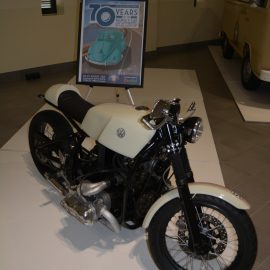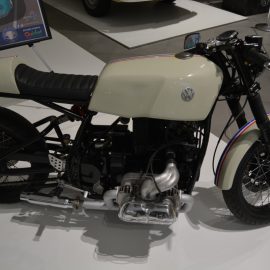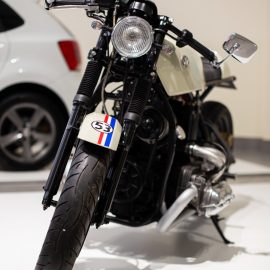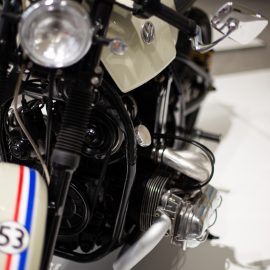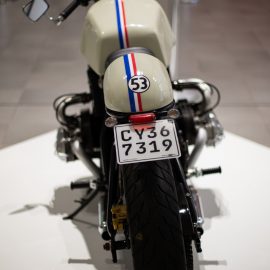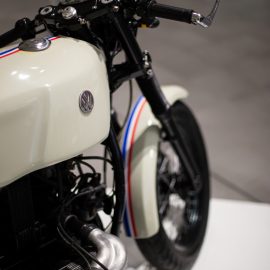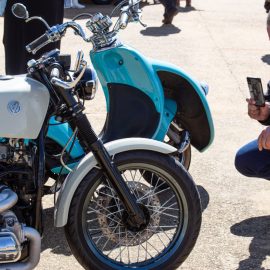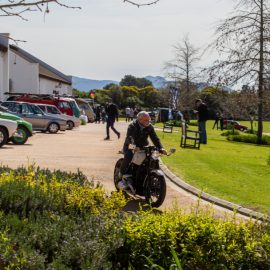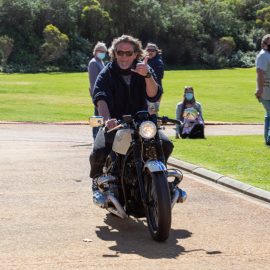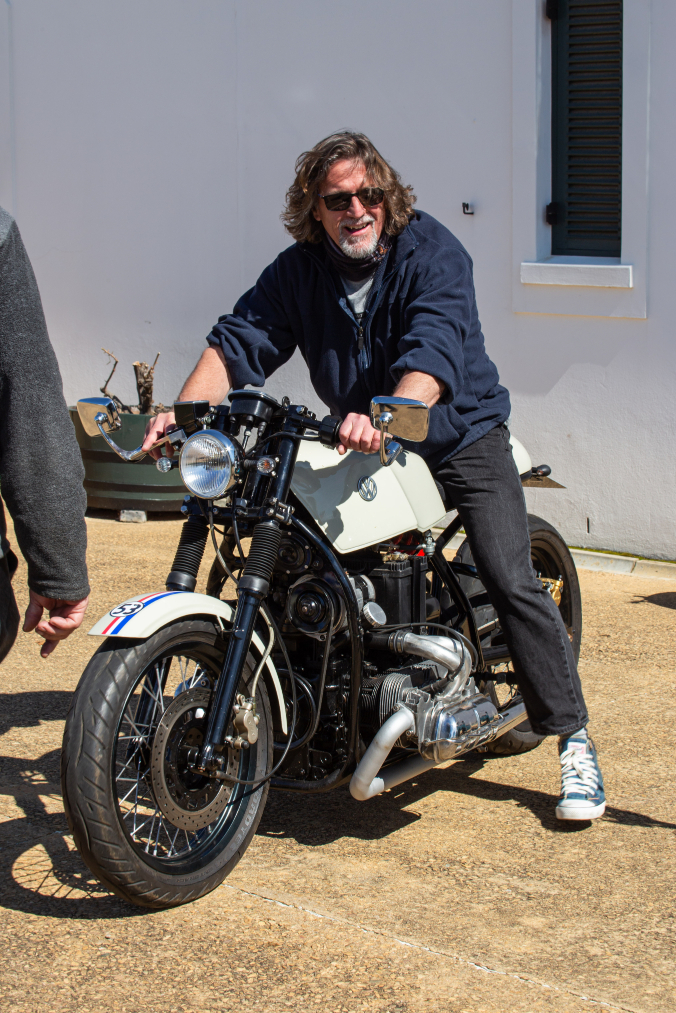
01 Sep On Yer Bike: VW Motorcycle
This month FMM Curator Wayne Harley catches a Beetle biker bug…
In August we celebrated 70 years of one of the world’s most successful motor companies establishing itself in South Africa, an occurrence that almost didn’t happen as, in the beginning, the South African government was opposed to the idea of importing and manufacturing Volkswagens. However, Baron Klaus von Oertzen, who was the local representative of Auto Union at the time, managed to set up a trade agreement between South Africa and Germany and Volkswagen for the export of South African wines. I find this rather ironic today, considering our current location for this 70th celebration! But I digress…
As is well-known, the humble VW Beetle, with is flat-four air-cooled engine, was a super successful product and served many drivers well past its sell-by date. It also must be the one product in the world that has been converted, modified and cannibalised more than any other car. Just think about it, we have seen Beetles as single-seater race cars, beach/dune buggies, and even amphibious vehicles. But that’s not all the flat-four air-cooled engine was repurposed into. Aeroplanes, generators, boats – and even motorcycles. Yes, you read that correctly – motorcycles…
While Volkswagen has never officially produced a motorcycle, it didn’t take people very long to see the advantage of the 1100 and 1 200 cc air-cooled engine. The horizontally-opposed four-cycle motor, with its high torque and low revving nature, soon found its way in a number of motorcycle frames. Harley-Davidson, Indian, Ural – to name a few – but it’s BMW that’s always been the most popular choice as it already used an air-cooled twin-cylinder boxer motor.
Some of these first conversions were claimed to be done so well that, at first glance, many people didn’t even notice the layout. The engine was super reliable, ran smoothly and, being VW, parts were more readily available. The main issue was the drive system, and in the case of the BMW drive gear and clutch, the increase in power was often just too much. Naturally, it’s not just a case of taking an engine out and bolting another one in. These types of conversions take many hours and a lot of engineering talent to complete successfully. Even in the case of BMW to VW conversions, the frames and drive trains have to be widened and strengthened.
A Brazilian businessman by the name of Daniel Rodrigues took the concept of VW-powered motorcycles one step further when he established AME, the Amazonas Motorcycle Company (Amazonas Motocicletas Especiais Ltda) to provide the Brazilian government with a replacement motorcycle to the ageing police and military motorcycles. It’s well known that South America has had the air-cooled VW in production way longer than any other part of the world. Rodrigues used this abundance of VW tech and old Harley-Davidson frames to build his Amazonas. These motorcycles were produced from 1977 to 1989 and were even equipped with a reverse gear as they are heavy and need it when backing up. Sadly, the Amazonas didn’t have the best reputation but today the name is kept alive by a cultish following.
So when Jason Furness of AutoTours said he had located a VW motorcycle in Cape Town, I couldn’t believe it. The museum was honoured to have it on show for the VW 70th anniversary weekend. This extraordinary motorcycle is owned by Neville Murray, who acquired it as an incomplete project. In this case, Neville fitted a 1 600 cc twin-port Beetle engine into a Honda motorcycle frame, and adopted a Continuously Variable Transmission (CVT), taken from a small helicopter tail-rotor application, and a drive of sprockets and chain, to get power to the rear wheel.
According to Neville, it’s a rather different ride to a conventional motorcycle, and it must be remembered that there is no clutch, so that you are always in gear/drive. So, just twist the throttle and you’re off! You can’t even blip the throttle as it will fly off with you. Neville chose to build his motorcycle in the style of a café racer, and painted it in the colours of the beloved movie Beetle ‘Herbie’, even to sporting the number 53.
This is a stunning example of a VW-powered motorcycle, and makes it clear why someone would fit one of the greatest auto engines in motoring history into a two-wheeler.




